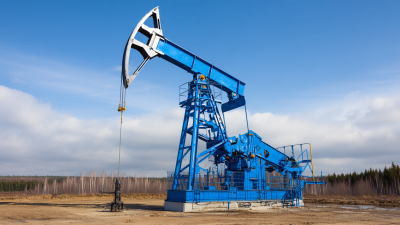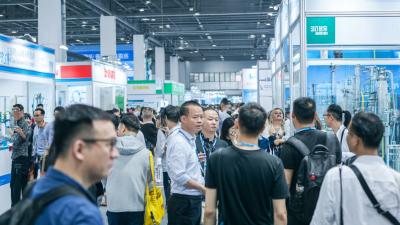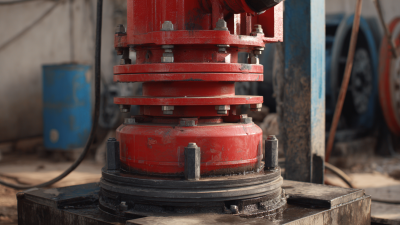Understanding the Impact of Artificial Lift Pumps on Oil Extraction Efficiency
In the ever-evolving landscape of oil extraction, the efficiency of artificial lift pumps plays a pivotal role in maximizing hydrocarbon recovery from underground reservoirs. As the demand for energy continues to rise, optimizing the performance of these pumps becomes increasingly critical. Artificial lift pumps are employed to enhance the extraction process by countering the natural decline in reservoir pressure, thereby enabling the flow of oil to the surface. This article seeks to unravel the intricate dynamics of artificial lift pumps, examining their various types, operational mechanisms, and how they significantly influence overall extraction efficiency. Understanding these factors is essential not only for industry professionals but also for stakeholders seeking to invest in or improve existing oil production technologies. By delving into the advantages and challenges associated with artificial lift pumps, we aim to provide actionable insights that can lead to better decision-making and enhanced production outcomes in the oil industry.

The Role of Artificial Lift Pumps in Enhancing Oil Recovery Rates
 Artificial lift pumps play a crucial role in enhancing oil recovery rates,
especially in mature fields where natural reservoir pressure has declined. By mechanically lifting hydrocarbons from the wellbore,
these pumps can significantly increase the volume of oil extracted, ensuring that reservoirs are efficiently depleted. The introduction of
artificial lift systems, such as rod pumps or electrical submersible pumps, allows operators to maintain
optimal production levels, facilitating recovery even in lower-pressure conditions.
Artificial lift pumps play a crucial role in enhancing oil recovery rates,
especially in mature fields where natural reservoir pressure has declined. By mechanically lifting hydrocarbons from the wellbore,
these pumps can significantly increase the volume of oil extracted, ensuring that reservoirs are efficiently depleted. The introduction of
artificial lift systems, such as rod pumps or electrical submersible pumps, allows operators to maintain
optimal production levels, facilitating recovery even in lower-pressure conditions.
Moreover, the application of artificial lift technology can reduce operational costs
and improve overall production efficiency. By optimizing lift parameters and employing adaptive control systems, oil producers can maximize
flow rates while minimizing energy consumption. This not only leads to higher profitability but also aids in extending
the productive life of wells. Consequently, understanding the intricacies of artificial lift pumps is essential for maximizing oil extraction
and ensuring sustainable resource management in an increasingly competitive energy landscape.
Types of Artificial Lift Systems and Their Specific Applications
Artificial lift systems play a crucial role in enhancing oil extraction efficiency, especially in wells where natural pressure is insufficient to bring oil to the surface. There are several types of artificial lift systems, each designed for specific well conditions and requirements. The most common types include beam pumps, electrical submersible pumps (ESPs), and gas lift systems.
Beam pumps, also known as nodding donkeys, are optimal for low-flow rate wells and are powered by an above-ground mechanism that pumps fluid from the reservoir. They are popular due to their mechanical simplicity and reliability.
On the other hand, ESPs are suitable for high-production wells and can handle larger volumes of fluid with efficiency. These pumps are submerged directly in the well and use electrical power to lift the oil to the surface.
Gas lift systems, which inject gas into the production tubing, reduce the density of the fluid column and facilitate the easier flow of oil. This method is particularly effective in high-water cut wells or during periods of low reservoir pressure, providing flexibility in varying operational conditions.
Each artificial lift system has its advantages and challenges, making the selection process critical for maximizing production. Factors such as well depth, fluid characteristics, and economic considerations play significant roles in determining the most appropriate system for a particular application. As technology continues to evolve, new methods and enhancements to existing artificial lift systems will likely provide even greater efficiencies in oil extraction.
Analyzing the Economic Benefits of Using Artificial Lift in Oil Extraction
The economic benefits of incorporating artificial lift systems in oil extraction processes are significant. Artificial lift methods, such as rod pumps, electric submersible pumps, and gas lift, enhance the ability to extract oil from reservoirs, particularly in conditions where natural pressure is insufficient. By lowering the cost per barrel of oil produced, these systems improve the overall profitability of oil extraction operations. Additionally, they enable producers to access previously untappable reserves, extending the life of existing wells and enhancing resource recovery rates.
Furthermore, the implementation of artificial lift technology can lead to reduced operational downtime and maintenance costs. With more efficient oil recovery, companies can optimize their asset utilization and achieve better cash flow management. This is especially vital in today's fluctuating oil market, where cost efficiency is paramount. Consequently, understanding and applying artificial lift solutions not only enhances extraction efficiency but also contributes to the sustainability of oil production in a competitive economic landscape.
Challenges and Limitations of Artificial Lift Pumps in Oil Production
Artificial lift pumps play a crucial role in enhancing oil extraction efficiency, yet their application is not without challenges. One significant limitation is the varying well conditions that these pumps must adapt to, which can severely impact their performance. Factors such as fluctuating reservoir pressure, fluid viscosity, and the presence of gas can cause inefficient operation, leading to increased energy consumption and potential damage to the equipment. Additionally, the installation and maintenance of artificial lift systems often require substantial investment and skilled personnel, which can be a barrier for smaller operators.

Moreover, the selection of the appropriate artificial lift method is critical, as each type—be it rod pumps, electrical submersible pumps, or gas lift—comes with its unique set of challenges. For instance, electrical submersible pumps are highly efficient but can struggle in high-temperature environments, while rod pumps may face issues with well integrity in highly deviated wells. Understanding these limitations is essential for optimizing oil production, ensuring that operators can make informed decisions to best suit their extraction needs while minimizing downtime and costs associated with pump failures or inefficiencies.
Future Innovations in Artificial Lift Technology for Oil Efficiency
The future of artificial lift technology in oil extraction is poised for transformative innovations that promise to enhance efficiency and reduce operational costs. With advances in materials science and data analytics, the development of more durable, lightweight components will lead to pumps that can withstand harsher conditions while optimizing performance. Enhanced monitoring systems, utilizing IoT and machine learning, will provide real-time data that enables predictive maintenance, thus ensuring that issues can be addressed proactively before they lead to significant downtime.
Another promising avenue for innovation lies in the integration of renewable energy sources with artificial lift systems. By harnessing solar or wind energy, oil producers can reduce their carbon footprint and decrease dependence on traditional power sources, resulting in a more sustainable operational model. Additionally, the integration of innovative algorithms for optimizing pump operations based on fluctuating reservoir conditions can significantly improve extraction rates. These advancements not only aim to boost oil production but also align with the growing emphasis on environmentally responsible practices in the energy sector.
Understanding the Impact of Artificial Lift Pumps on Oil Extraction Efficiency - Future Innovations in Artificial Lift Technology for Oil Efficiency
| Parameter | Current Technology | Efficiency (%) | Future Innovations | Projected Efficiency (%) |
|---|---|---|---|---|
| Surface Pumps | Conventional Mechanical | 70 | Smart Monitoring Systems | 85 |
| Downhole Pumps | Electric Submersible Pumps | 68 | Advanced Materials | 80 |
| Gas Lift Systems | Traditional Gas Lift | 60 | Automated Gas Injection | 75 |
| Progressing Cavity Pumps | Standard PCP | 65 | High-Efficiency Design | 78 |
Related Posts
-

5 Best Artificial Lift Pumps Revolutionizing Oil Recovery: Boost Efficiency and Cut Costs
-

How to Optimize Production with Artificial Lift Pumps: Enhancing Efficiency in Oil Wells
-

How to Choose the Right Jet Pump for Your Industrial Needs Based on Performance Data
-

Exploring Market Trends: Ultra Jet Pumps at the 138th Canton Fair 2025 in China
-

7 Best Practices to Maximize Efficiency of Your Well Pressure Pump
-

Streamlining Efficiency: Innovative Solutions for Gas Well Pump Operations in Oil and Gas Industry
